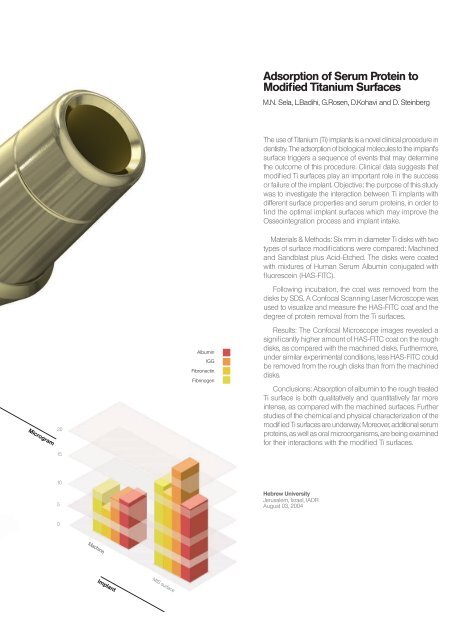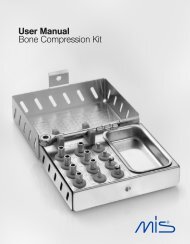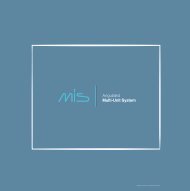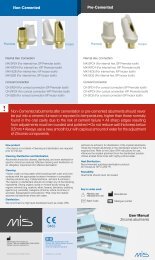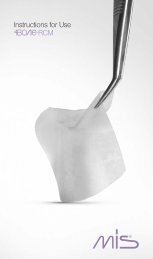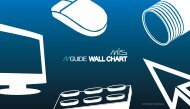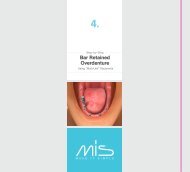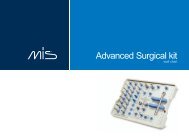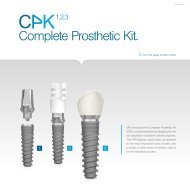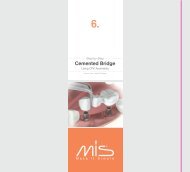A Conical Connection Implant - Mis Implants
A Conical Connection Implant - Mis Implants
A Conical Connection Implant - Mis Implants
You also want an ePaper? Increase the reach of your titles
YUMPU automatically turns print PDFs into web optimized ePapers that Google loves.
Machine<br />
<strong>Implant</strong><br />
Adsorption of Serum Protein to<br />
Modified Titanium Surfaces<br />
M.N. Sela, L.Badihi, G.Rosen, D.Kohavi and D. Steinberg<br />
The use of Titanium (Ti) implants is a novel clinical procedure in<br />
dentistry. The adsorption of biological molecules to the implant’s<br />
surface triggers a sequence of events that may determine<br />
the outcome of this procedure. Clinical data suggests that<br />
modified Ti surfaces play an important role in the success<br />
or failure of the implant. Objective: the purpose of this study<br />
was to investigate the interaction between Ti implants with<br />
different surface properties and serum proteins, in order to<br />
find the optimal implant surfaces which may improve the<br />
Osseointegration process and implant intake.<br />
Microgram<br />
20<br />
15<br />
Albumin<br />
IGG<br />
Fibronectin<br />
Fibrinogen<br />
Materials & Methods: Six mm in diameter Ti disks with two<br />
types of surface modifications were compared: Machined<br />
and Sandblast plus Acid-Etched. The disks were coated<br />
with mixtures of Human Serum Albumin conjugated with<br />
fluorescein (HAS-FITC).<br />
Following incubation, the coat was removed from the<br />
disks by SDS. A Confocal Scanning Laser Microscope was<br />
used to visualize and measure the HAS-FITC coat and the<br />
degree of protein removal from the Ti surfaces.<br />
Results: The Confocal Microscope images revealed a<br />
significantly higher amount of HAS-FITC coat on the rough<br />
disks, as compared with the machined disks. Furthermore,<br />
under similar experimental conditions, less HAS-FITC could<br />
be removed from the rough disks than from the machined<br />
disks.<br />
Conclusions: Absorption of albumin to the rough treated<br />
Ti surface is both qualitatively and quantitatively far more<br />
intense, as compared with the machined surfaces. Further<br />
studies of the chemical and physical characterization of the<br />
modified Ti surfaces are underway. Moreover, additional serum<br />
proteins, as well as oral microorganisms, are being examined<br />
for their interactions with the modified Ti surfaces.<br />
10<br />
5<br />
Hebrew University<br />
Jerusalem, Israel, IADR<br />
August 03, 2004<br />
0<br />
Machine MIS surface


